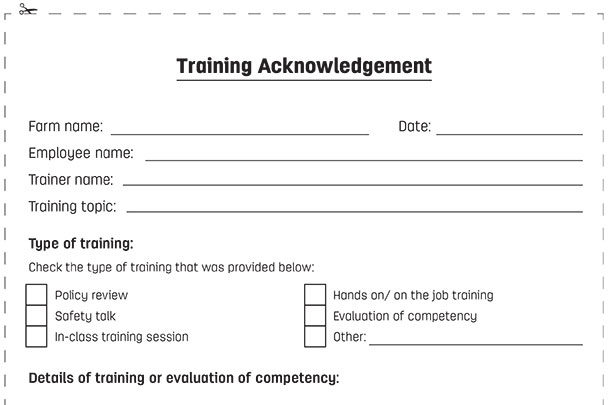What is due diligence? Due diligence means taking all reasonable precautions to prevent injuries or incidents in the workplace. “All reasonable precautions” is based on the level of judgment and care a person would reasonably be expected to do under the circumstances. The key here is preventing injuries. Many people think of due diligence as a defense mechanism only but, in reality, the goal is:
1. To prevent injuries and incidents
2. To be able to prove that all reasonable steps were taken if an injury does occur
Due diligence is an important part of a legal defense if charges are laid under the occupational health and safety legislation. In these cases, the defendant must be able to prove that all precautions, reasonable under the circumstances, were taken to protect the health and safety of workers. One of the key factors in proving due diligence is to have all health and safety-related items documented in writing. Keep in mind: Due diligence is only demonstrated by your actions before an event occurs, not after.
To exercise due diligence, an employer must identify possible workplace hazards and take action to prevent incidents or injuries that may happen because of these hazards. It is extremely important to identify the potential hazards in your workplace before an incident occurs. Ignorance is not a defense when it comes to health and safety.
How does an employer establish a due diligence program?
- Be proactive. Identify potential hazards in your workplace.
- Have written policies and procedures in place and ensure employees are aware of them.
- Provide training and education to the employees so that they understand and carry out their work according to the policies and procedures. Document all training, both formal and informal.
- Complete practical evaluations of employees to ensure they are competent before allowing them to complete a task. Keep a record of this evaluation.
- Complete workplace inspections. Look for hazardous work conditions and dangerous practices.
- Make necessary changes to correct items found on the inspection.
- Inspect equipment and make repairs as needed. Do not allow unsafe equipment to be used.
- Provide appropriate PPE and enforce the use of PPE with all employees.
- Ensure employees report incidents and near misses and ensure they are investigated to determine the root cause and required corrective actions.
- Implement corrective action following an incident or near miss.
- Review your processes frequently through self-evaluations. Continuously assess health and safety in the workplace and make changes as necessary.
- Document everything. You should be able to provide proof of each of the items above.
Employers must educate and train their supervisors to ensure they are competent. Ensure that managers and supervisors:
- Provide health and safety orientation for new employees and document the orientation.
- Meet regularly with staff to discuss health and safety matters.
- Complete monthly safety talks and get signatures on the attendance sheets.
- Inspect areas of the workplace under their responsibility and respond promptly to unsafe conditions and activities.
- Pay attention to routine and non-routine activities, ensuring that employees understand the hazards and the preventative measures to be followed.
- Monitor the workplace and ensure employees are following policies and procedures.
- Hold employees accountable and keep written documentation of progressive discipline for breaches of safety rules.
Take the time to review your workplace and the tasks being performed. Identify the high-risk tasks by thinking about what could possibly go wrong and what the outcome of an injury may be. Then think about what steps can be taken to prevent things from going wrong.
This is especially important for things that are very likely to result in an injury and for things that are less likely to result in an injury, but if an incident did occur, the injury could be severe.
Once you have identified the high-risk tasks in your workplace, ask yourself these questions:
- Have you assessed what could go wrong with these items?
- Do you have documented procedures and training?
- Do employees actually know how to do the task safely?
- Have you evaluated the employee’s competency for that task?
- Is the evaluation documented?
- Are employees monitored and held accountable for completing the task safely?
- Does the task involve equipment or PPE?
- If so, do you have the right equipment or PPE in place and has it been inspected?
- Can you prove it has been inspected?
By taking the time to consider these questions, evaluating the high-risk tasks in your workplace, implementing controls and documenting all health and safety items, you will reduce the risk of injury in your workplace and ensure you are meeting the requirements for due diligence.










